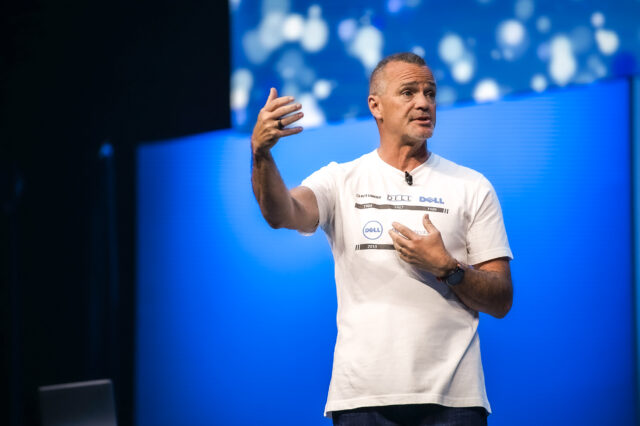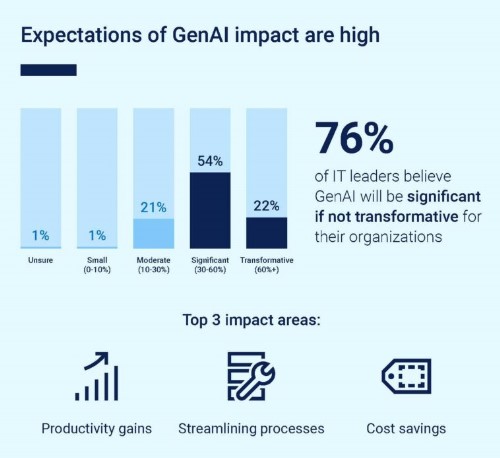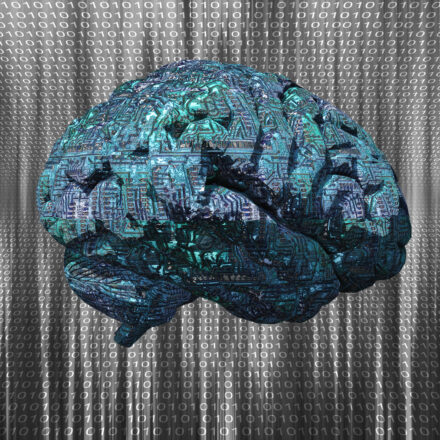By: Jeff Clarke, vice chairman and COO, Dell Technologies

This year has brought the fastest adoption curve of technology I’ve ever seen. Yes, I’m talking about generative AI (GenAI), but with it comes an accelerated pace of innovation in multicloud, edge, telecom, security and the PC ecosystem. GenAI’s influence across macro- and micro-trends is huge, but it isn’t the only big thing on my mind.
Here’s what I expect in 2024:
Data drama will boost the role of multicloud.
We’ve experienced years of data growth and advances in compute power and storage performance. Guess what? More data is coming. More power and performance are coming. Our economy lives, runs and thrives on data. And AI loves data.
Organizations’ outcomes are only as good as the data on which they rely — garbage in, garbage out. IDC research has found that organizations are only able to extract 38% of the value of their data, likely because locating, accessing, processing and protecting data throughout its life cycle and across disparate environments is way too difficult.
There are data copies living on-prem and across clouds, proliferating data sources, data formats and tools making it hard to unlock real business value. With data and apps running across on-prem, edge and multiple public clouds, organizations will be pressed to get control of shadow IT and simplify for a cleaner view of their entire IT estates. Multicloud isn’t new, but 2024 is the year the approach gets a boost.
Better data outcomes are on the horizon.
We know that over 80% of data lives on-prem, and over 50% of new data will be generated at the edge. That means workloads continue to be highly distributed and decentralized as AI moves to the edge across devices and applications.
Early-edge AI proof of concepts will begin to translate into better outcomes across the manufacturing, retail, healthcare and transportation industries. We will see customers create and use domain-specific, field-of-study-specific and process-specific models where data is stored and instantaneously acted on at their own unique edge.
It’s critical for organizations to use their own data to train and tune new models and run inference where data is created. Think about a smart factory doing heavy process automation and creating real-time data. More and more resources are going to be at the edge of the network doing computation and storing information.
GenAI will move from proof of concept to proof of productivity gains.
GenAI projects will shift from proof of concept to proof of productivity gains with greater adoption and scale across organizations and industries. And according to

our GenAI Pulse survey, 65% of organizations that have moved beyond pilot stages expect to see meaningful results from their GenAI initiatives in the next 12 months.
LLMs kickstarted exciting possibilities with GenAI. But I believe the diverse needs of enterprises will promote the rise of smaller, flexible and more efficient language models. As AI decentralizes and the algorithm evolves to support smaller models and smaller data sets, right-sized, less power-hungry infrastructure is increasingly important. We’re also seeing an advanced speed of architecture evolution with retrieval augmented generation (RAG) and other techniques, making GenAI outcomes more accessible.
Expect to see increased demand for open-source AI tools and the platforms that support them.
The desire for greater choice will drive demand for open-source AI tools. This will make GenAI more accessible and promote innovation and AI transparency. As open-source adoption grows, developers will seek IT platforms that can seamlessly incorporate these tools across various domains, like MLOps, ITOps and AIOps. This integration is vital to support secure and scalable AI deployments within enterprise environments.
The availability of both closed- and open-source models and tools to help enterprises implement GenAI will continue to expand. This year, Meta released Llama 2 as a family of open technologies, which helped the industry shift toward openness. There will be more foundational models, accessories and tools to help develop GenAI systems, secure them and manage the data they need.
As users look to maximize these models and tools, we know that majority partnerships, like ours with Hugging Face, will help these AI builders seamlessly take advantage of open-source libraries while keeping their data securely on-premises.
We also see a big push for architectural and silicon innovation to support a range of workloads running in a highly distributed landscape. These include DPUs, FPGAs, neuromorphic and quantum computing chips, created with sustainable IT in mind to reduce energy consumption. Today, we track over 100 diverse AI accelerators in development and expect demand in 2024 to pull more options into production.
You’ll love your PC…even more

The PC continues to get more powerful. Moving beyond AI integrated into systems for better performance, we’re about to see AI come to life and deliver on the promise of digital assistants.
For example, instead of mostly command-and-control interactions driven by you typing on a keyboard, there will be additional non-text-based ways to prompt technology to have a bi-directional experience between humans and PCs. Imagine a future where you can collaborate or co-create with voice, visual commands and gestures.
Envision allowing your PC to interpret your mood, facial expression, tone of voice or even a change in the way you type for a much richer experience that delivers the result you are looking for and in your preferred format. Your PC experience will transition from searching to prompting, from reading to understanding, from editing to directing.
As we ask our devices to do more, it will require PCs that use language modeling, language processing and machine learning capabilities to improve the user experience. AI making its way to the device also brings with it efficiencies like cost effectiveness, improved privacy and security, reduced latency and sustainability benefits. It will also require a new architecture that doesn’t purely rely on the CPU or GPU for processing.
While we can’t always predict the future, we have no doubt that 2024 will be another wild ride of innovation. As a tech optimist, I am confident that innovation will drive amazing societal and business progress.
Interested in hearing more from Dell thought leaders on 2024 predictions? Click this link to register for an upcoming broadcast featuring Chief AI Officer Jeff Boudreau and Accenture Chief AI Officer Lan Guan on demystifying generative AI and key advice for the year ahead.
Lead photo by iStock

